Flutter's Evolution: Insights from CTO Report 2024
Summary
The Flutter CTO Report 2024 by LeanCode provides a comprehensive analysis of Flutter's current adoption and performance across industries and regions, based on feedback from nearly 300 technology leaders worldwide. The report underscores Flutter's significant growth, its challenges, and the prospects within the tech industry.
Key insights:
Wide Adoption and Demographics: Flutter's adoption spans various industries and continents, with significant contributions from CTOs and tech leads who have extensive experience in the IT sector. Its usage in critical sectors like finance and healthcare highlights its reliability and capability to handle sensitive data.
Technology Stack: Most respondents favor Dart, with high satisfaction rates, while Kotlin and Swift also show strong preference. The diversity in technology stacks underpins Flutter’s flexibility and integration capabilities across different platforms.
Challenges and Benefits: While concerns about Google potentially discontinuing support for Flutter persist, the benefits such as code reusability, developer experience, and performance outweigh the drawbacks. The main challenges cited include architectural decisions, third-party SDK integrations, and finding qualified Flutter developers.
Enterprise and Large-Scale Applications: Flutter is increasingly seen as viable for large-scale applications, with a growing trust reflected in its adoption for developing enterprise-level solutions. Its performance, particularly in developing multiple apps from a single codebase, offers substantial cost and time efficiencies.
Community and Future Outlook: The Flutter community’s alignment with the development roadmap, including advancements like SEO improvements and WebAssembly support, highlights the active engagement and ongoing enhancements that continue to attract developers.
Tooling and Infrastructure: Flutter’s ecosystem is supported by robust tooling and infrastructure, with strong preferences for AWS and Firebase among cloud solutions, and GitHub Actions leading in CI/CD tools. These tools facilitate effective development practices and efficient workflows.
Introduction
Flutter, introduced in 2018, aimed to deliver a revolutionary promise: code once, run anywhere. While this cross-platform approach intrigued many, it also faced skepticism. Now, five and a half years later, the Flutter community has grown and evolved considerably. To gauge the current landscape, LeanCode conducted an extensive survey involving nearly 300 Chief Technology Officers (CTOs), Chief Information Officers (CIOs), and Tech Leads across 70 countries.
This article aims to give a comprehensive summary of the Flutter CTO Report 2024 by LeanCode. Drawing from the report, we will cover the current state of Flutter, its adoption, challenges, and prospects based on real-world data.
Demographics of the Survey
1. Respondents
Survey Pool: The report is based on 300 submissions, focusing on high-seniority participants. Submissions by regular or junior developers were excluded, resulting in 281 qualified entries for the first edition of the Flutter CTO Survey. Respondents answered 52 questions, with an average completion time of 19 minutes.
Experience: 85% of respondents have more than 5 years of experience, and over 50% have been in the IT industry for more than 10 years. 48.4% of respondents were tech leads and 38.4% were CTOs.
Team Size: 40% of respondents work in mobile teams with more than 5 developers, and 22.8% are in organizations with more than 200 people.
These numbers indicate that while Flutter was initially adopted by smaller teams, its popularity has significantly grown among enterprise teams. These larger organizations are now utilizing Flutter to build large-scale applications within their mobile development teams.
Geographical Coverage: Participants come from nearly 70 countries on 6 continents, with notable responses from the US (32 respondents), Germany (23 respondents), France (22 respondents) and UK (20 respondents).
2. Industries
The survey covers insights from a diverse range of industries, including Finance (23.9%), Utility (20.6%), and Healthcare (17.6%). The inclusion of financial and healthcare-related applications among the top five industries using Flutter highlights its reliability as a framework. This demonstrates Flutter's capability to build secure applications for highly demanding environments.
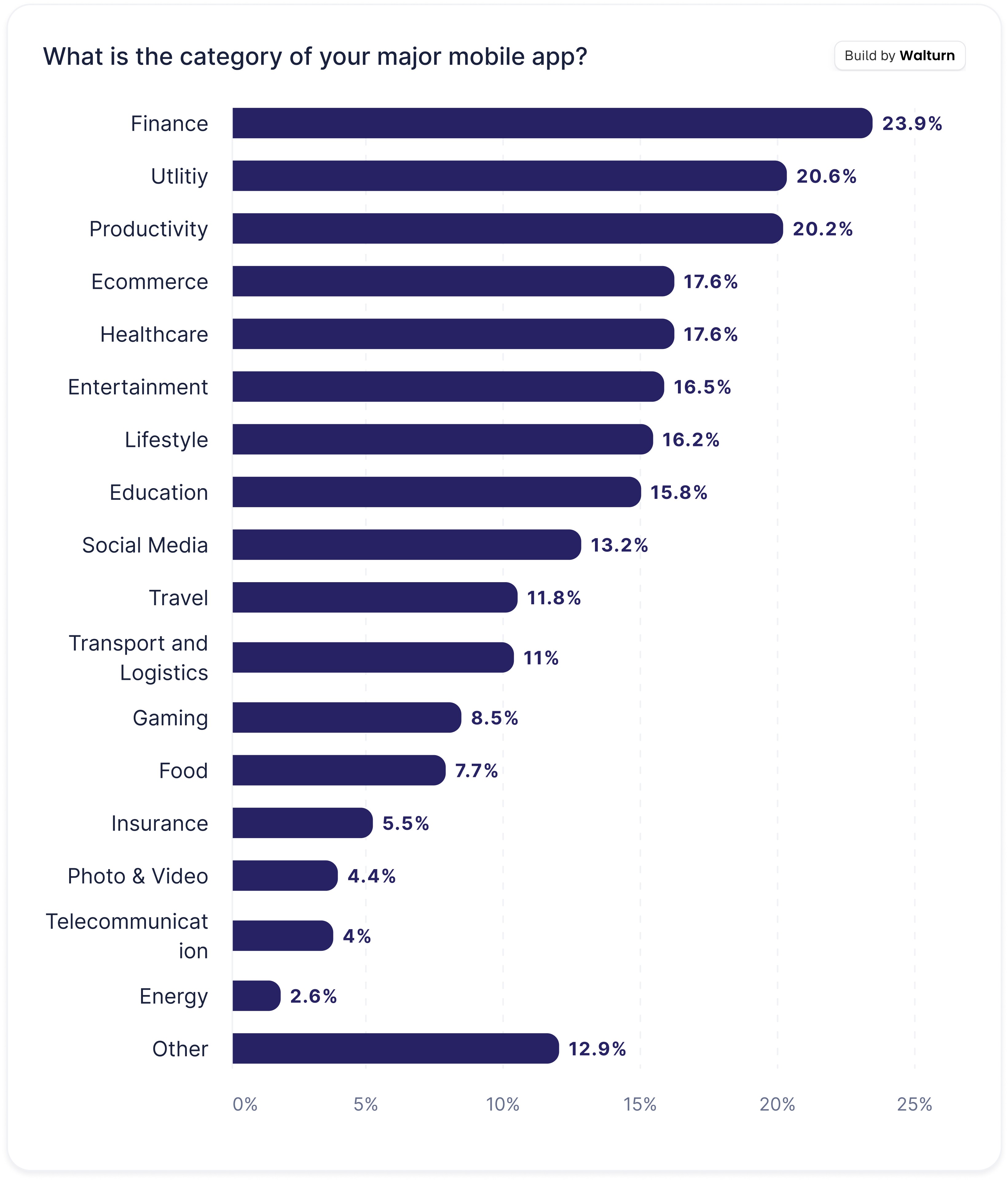
3. Other Technologies
Respondents have experience with various programming languages such as Dart (94.9%), JavaScript (59.9%), and TypeScript (52%) at their companies. 98.9% of the respondents liked Flutter. Kotlin and Swift also had high levels of satisfaction from users.

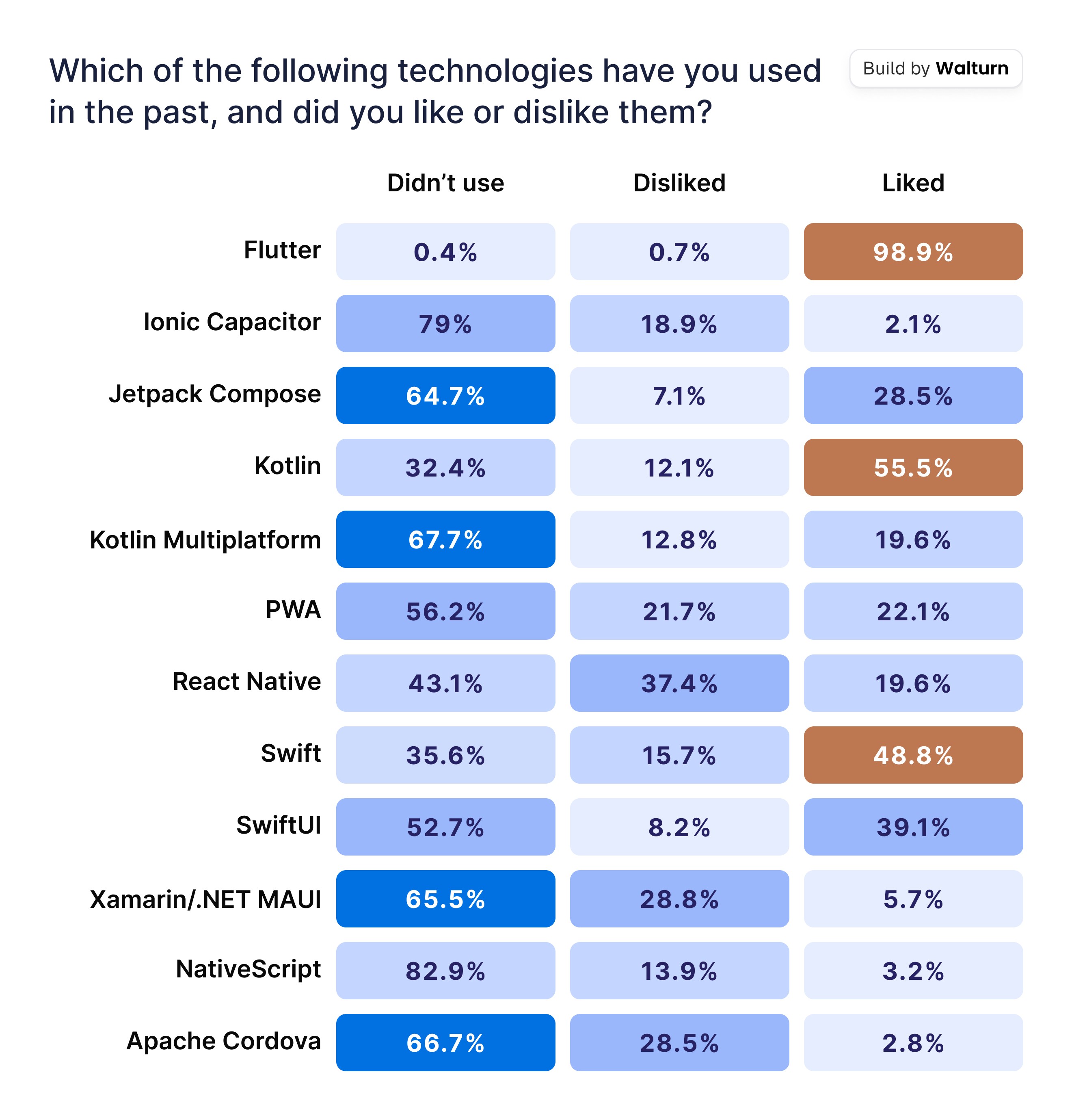
How Companies Are Adopting Flutter
1. Adoption Level
73.6% of companies have some mobile teams using Flutter while others still support native or other solutions. 16.8% are researching if Flutter is a good choice, and 3.2% are building initial proof-of-concepts (PoCs). The majority of respondents’ teams are migrating to Flutter for their entire product portfolio.
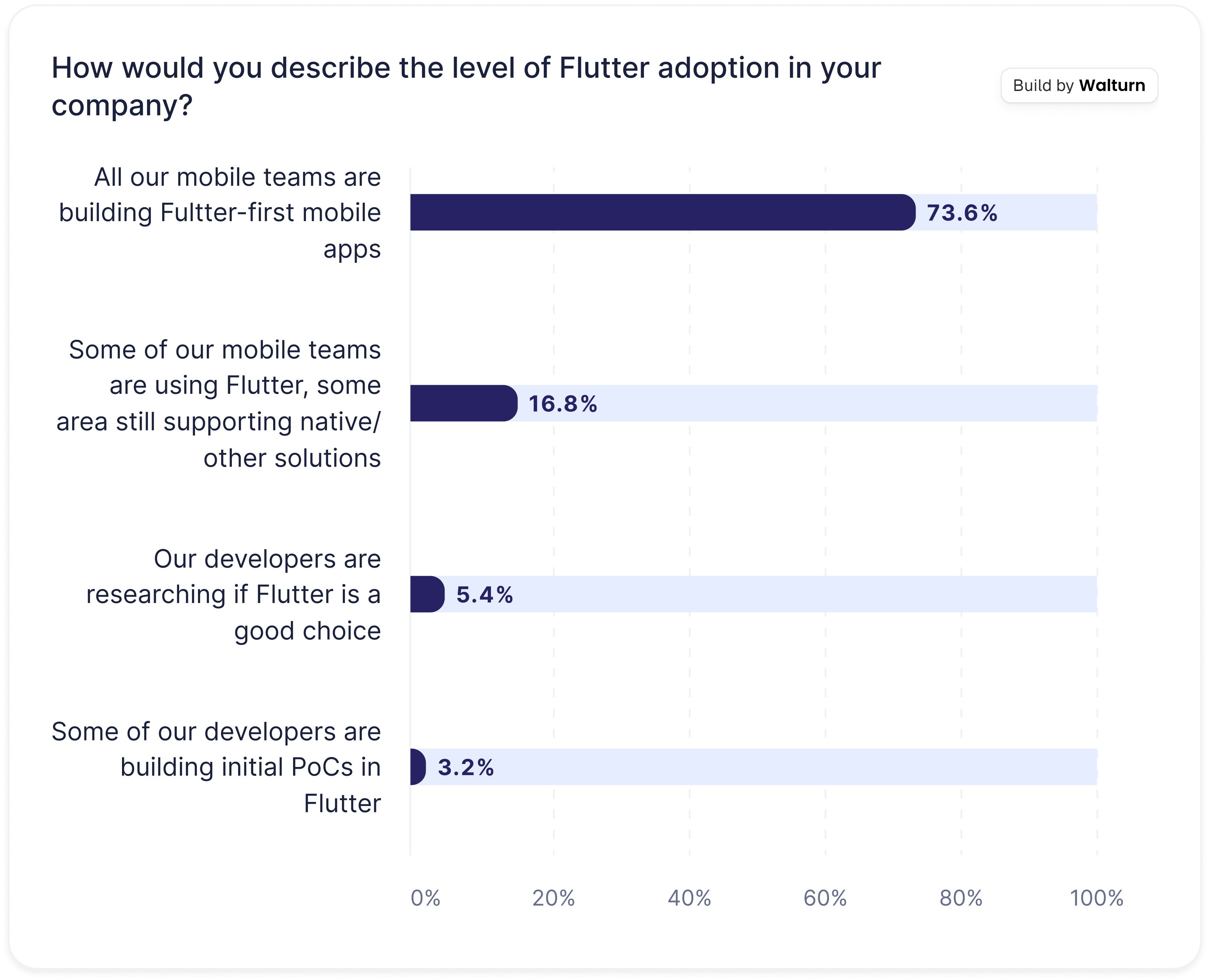
2. Target Platforms
Flutter is used across multiple platforms: Android (96.4%), iOS (95.7%), Web (64.4%), macOS (24.1%), Windows (20.1%), Linux (11.2%), Embedded (6.5%), and TV (5.4%). It has proven itself to be a truly cross-platform framework, with only 30% using it solely for iOS or Android, and the third-biggest platform being the Web.
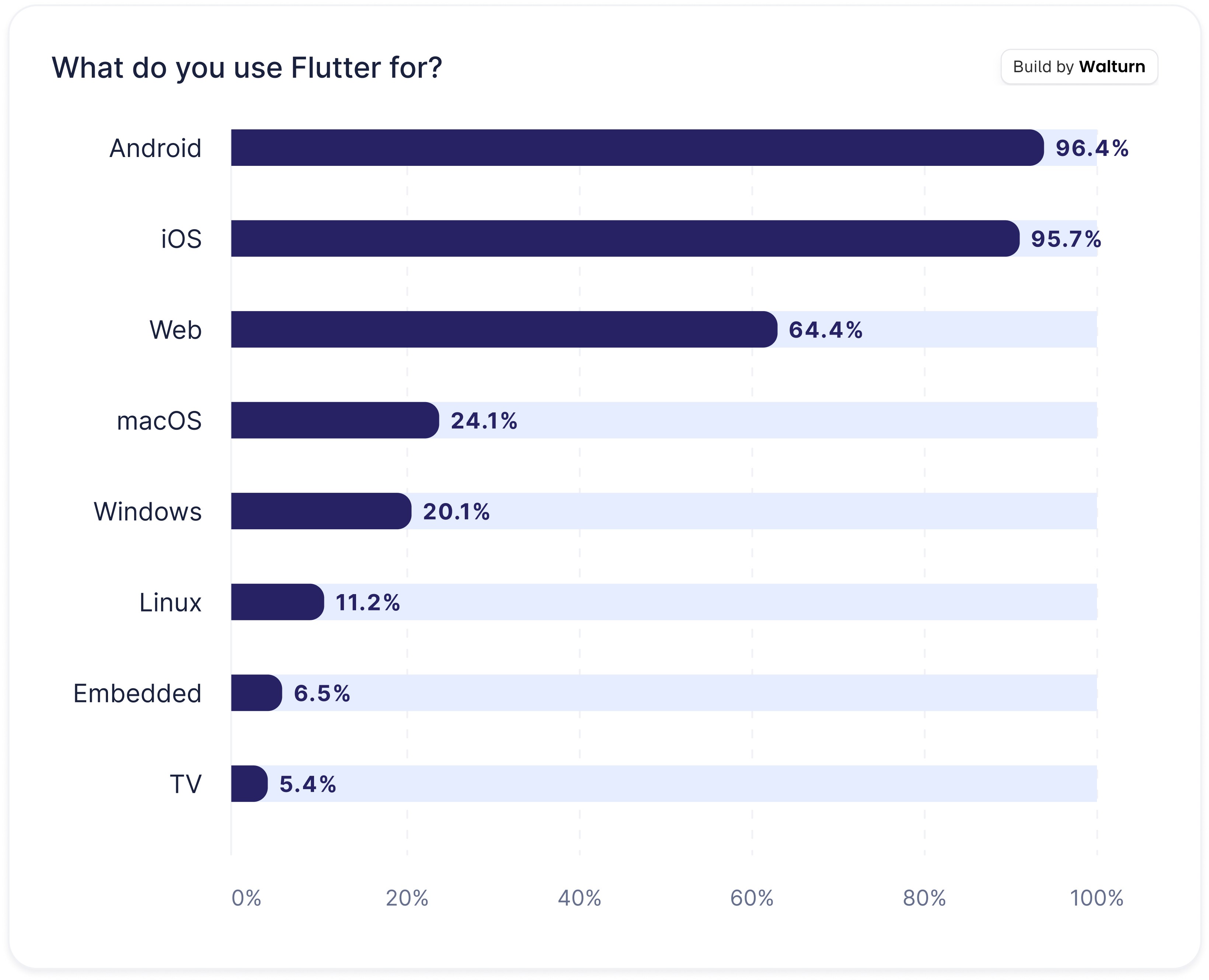
3. Usage
Flutter simplifies the process of building multiple applications, with over 80% of respondents creating more than one app. Additionally, Flutter accelerates product development, as more than 40% of respondents reported managing four or more Flutter apps.
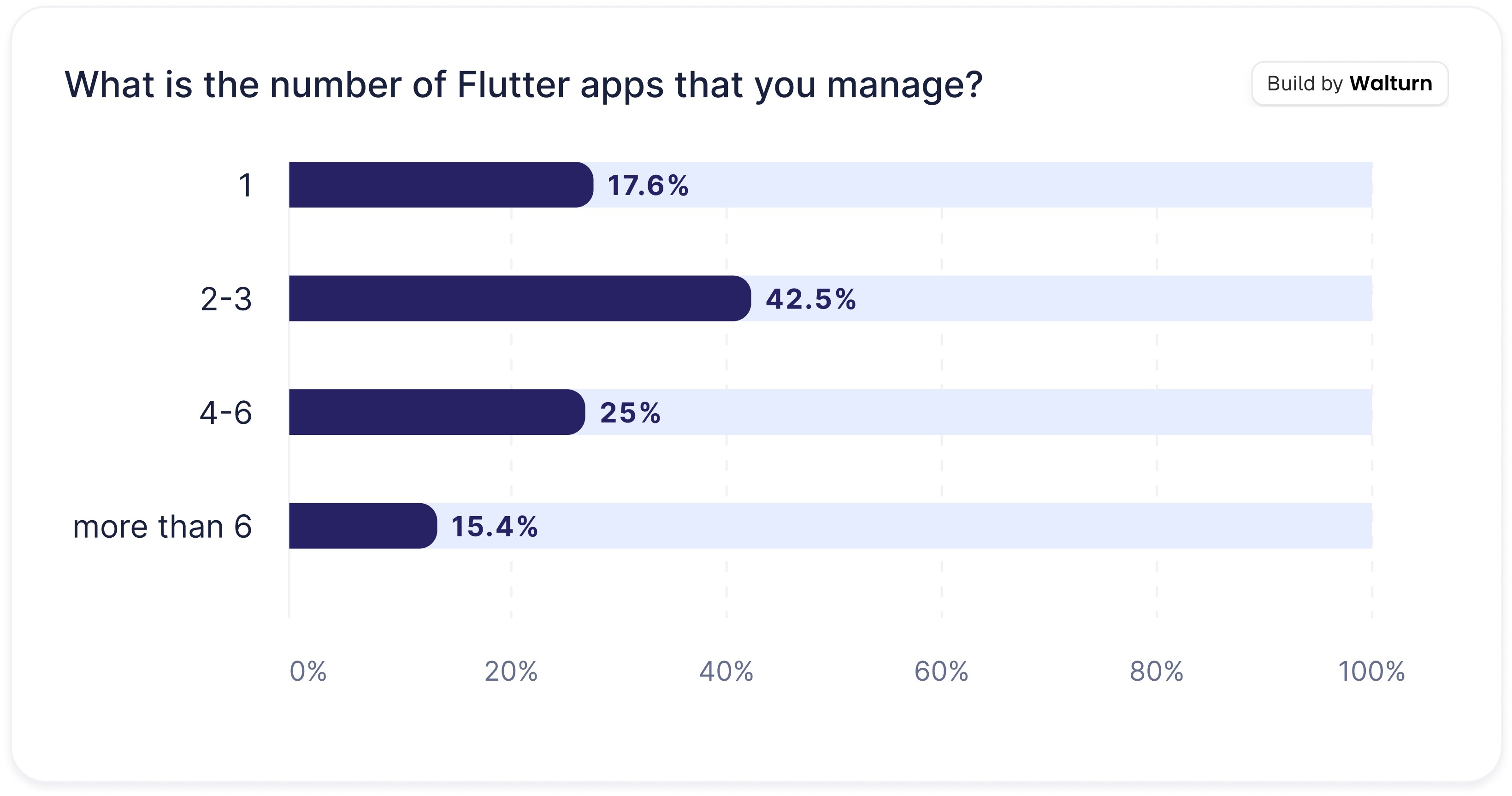
4. Impact
The impact of Flutter apps is on the rise, with 36 responses from teams serving over 1 million users. Flutter is particularly appealing to teams with large user bases, as 30% of submissions came from apps with more than 100,000 users and 13% from apps with over 1 million users.
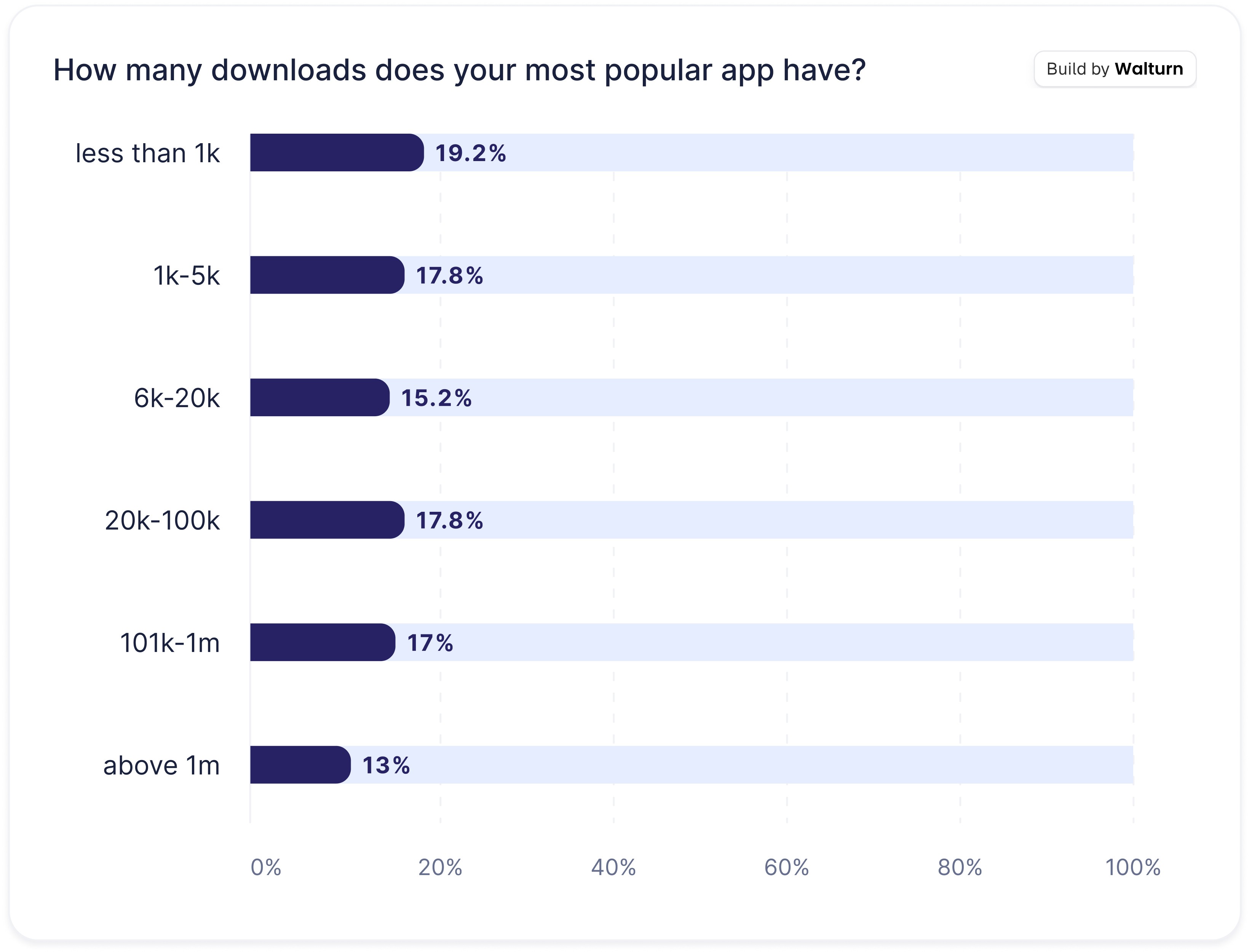
PoC Development: 64.1% of teams build PoCs in Flutter before starting regular development, and 44.1% rely on online Flutter courses for decision-making. Given the significance of selecting the right framework, it's unsurprising that companies invest time and resources in developing PoC applications, attending courses, or hiring external consultants.
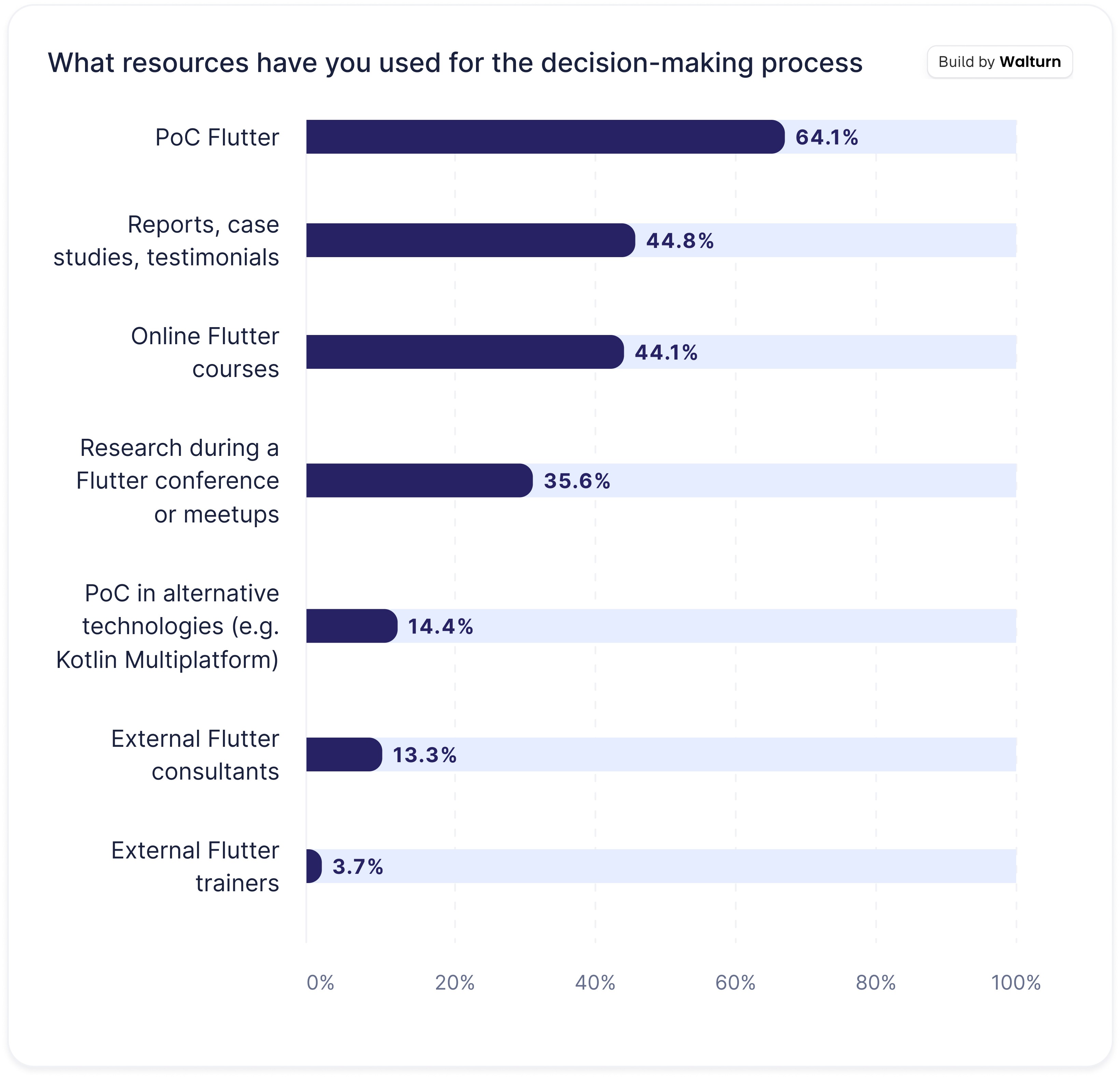
5. Factors in Choosing Flutter
Code reusability and developer experience are primary arguments in favor of using Flutter. The concept of creating multiple applications from a single codebase is Flutter's most significant value proposition. This approach leads to reduced development costs and faster delivery times, although respondents mention these benefits less frequently. From a technical standpoint, developers appreciate the high performance, seamless integration of native software development kits (SDKs), and overall positive development experience that Flutter offers.
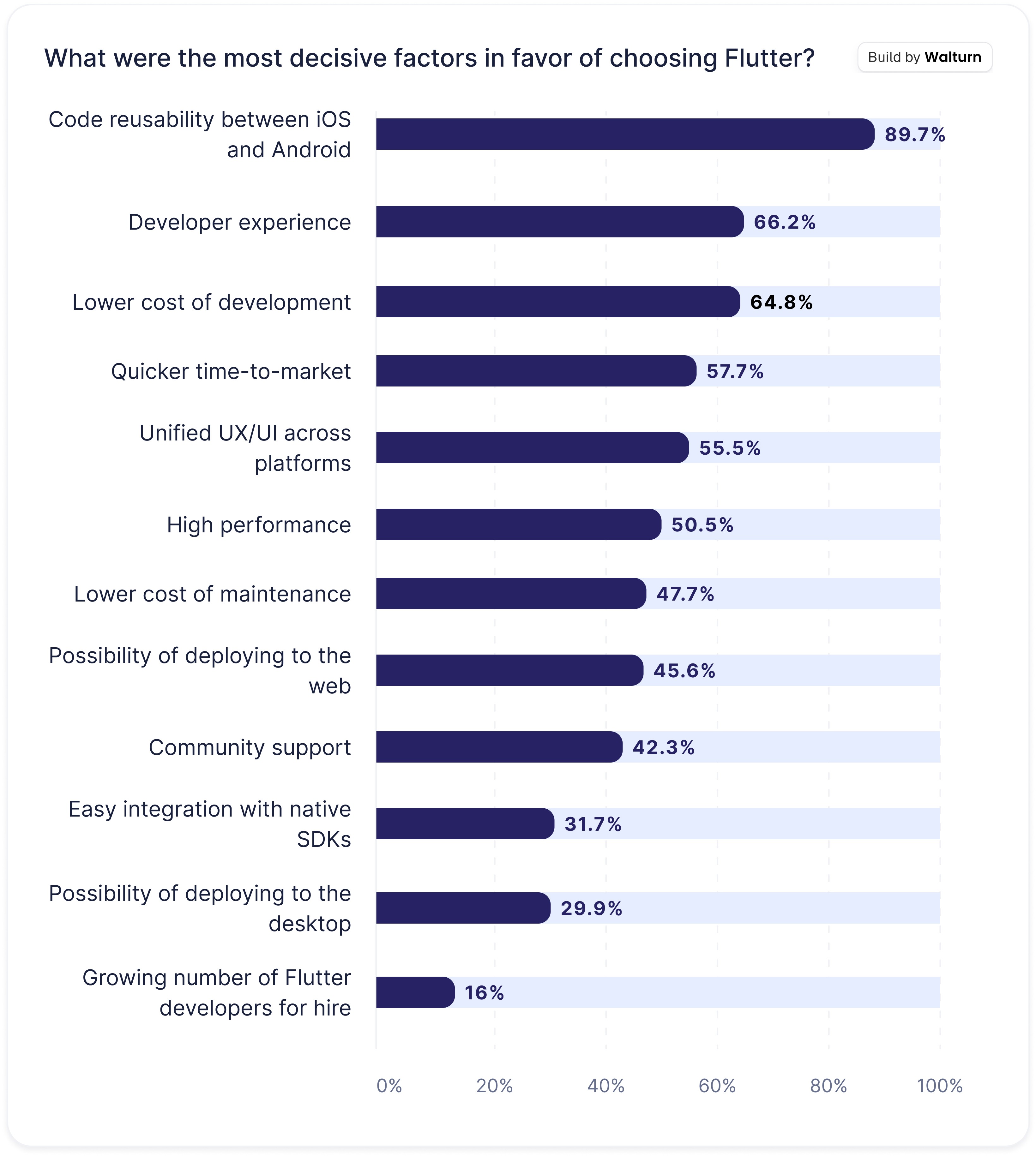
6. Arguments Against Flutter
The fear of Google discontinuing support for Flutter was mentioned by 56% of respondents. This concern is addressed by Craig Labenz in the interview "The Future of Flutter". Labenz highlights that Flutter saves Google significant resources, more than the teams of Dart and Flutter combined, due to Google's internal use of Flutter. Additionally, developers using Flutter tend to generate more revenue for Google than those who don't. Hence, it wouldn’t make sense for Google to discontinue its support anytime soon.
The second concern, about Search Engine Optimization (SEO) support, is discussed by Kevin Moore in "Is Flutter for Web Production Ready?". While the first concern is easily dismissed, the second remains technical, with no significant improvements announced at the time of the report. Additionally, 29% of respondents reported difficulties hiring Flutter developers, a challenge common across various technologies.
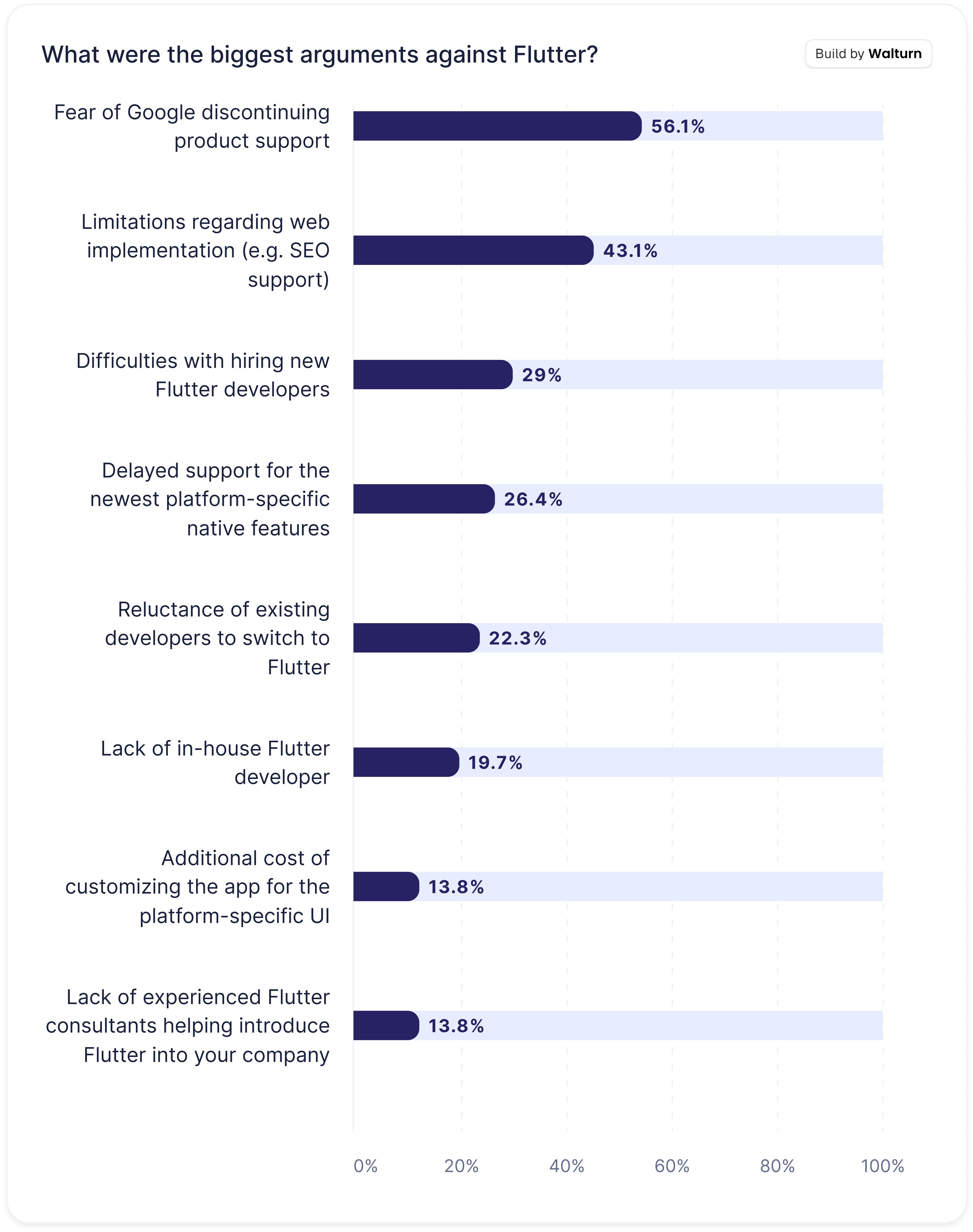
7. Problems in Starting With Flutter
Choosing the right Flutter architecture is the biggest challenge for new teams due to the framework's relative youth and lack of default solutions in areas like state management. With multiple options such as Bloc, Riverpod, and Provider, teams can easily become overwhelmed. Other common challenges include concerns about non-functional requirements (26%), native integrations (24.6%), and third-party SDK integrations (23.8%). Despite these, Flutter excels in these areas and they are not significant obstacles today.
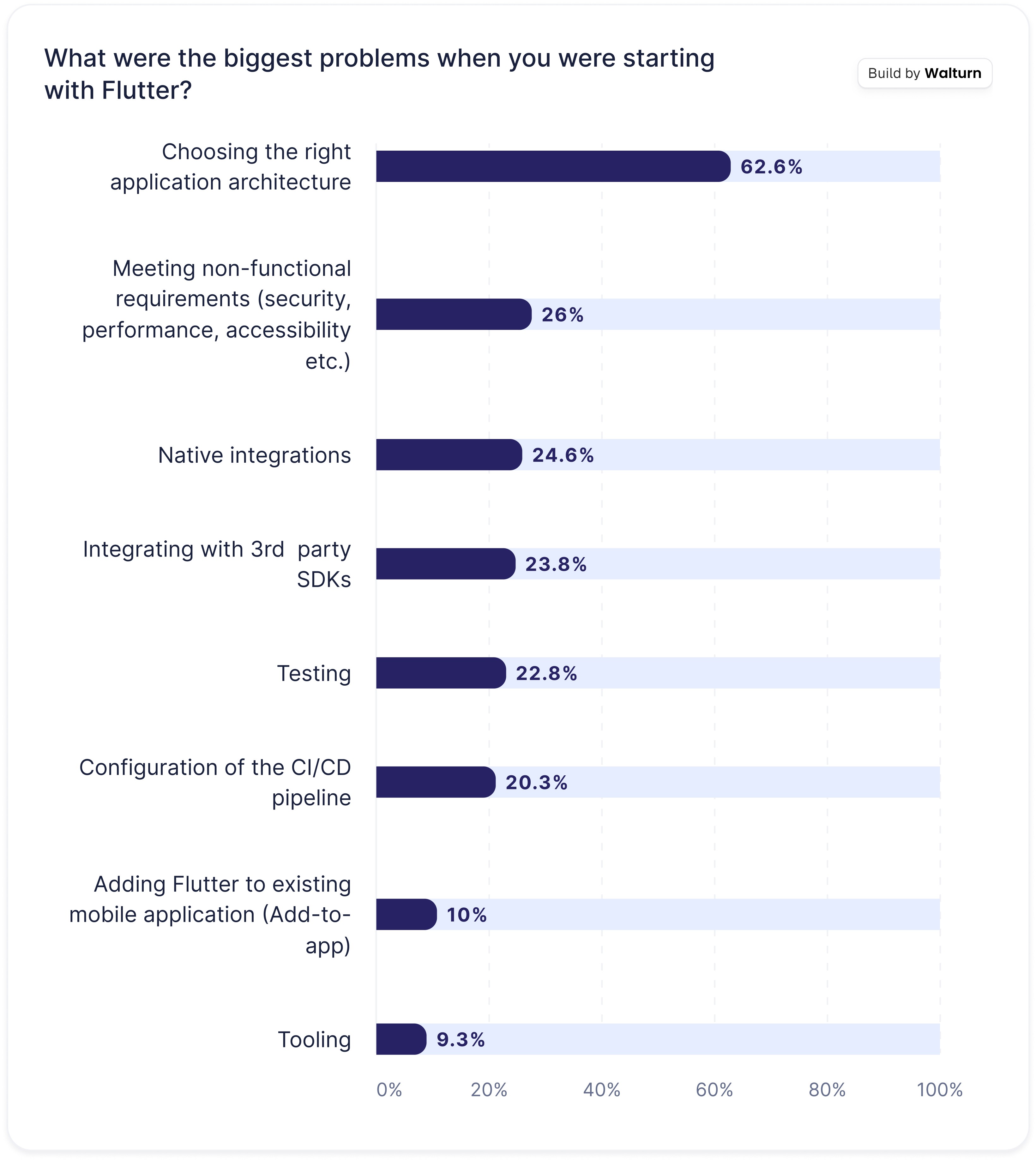
8. Feedback after Using Flutter
Satisfaction: 95.7% of respondents would choose Flutter again, and 52% are extremely likely (10/10) to recommend it.
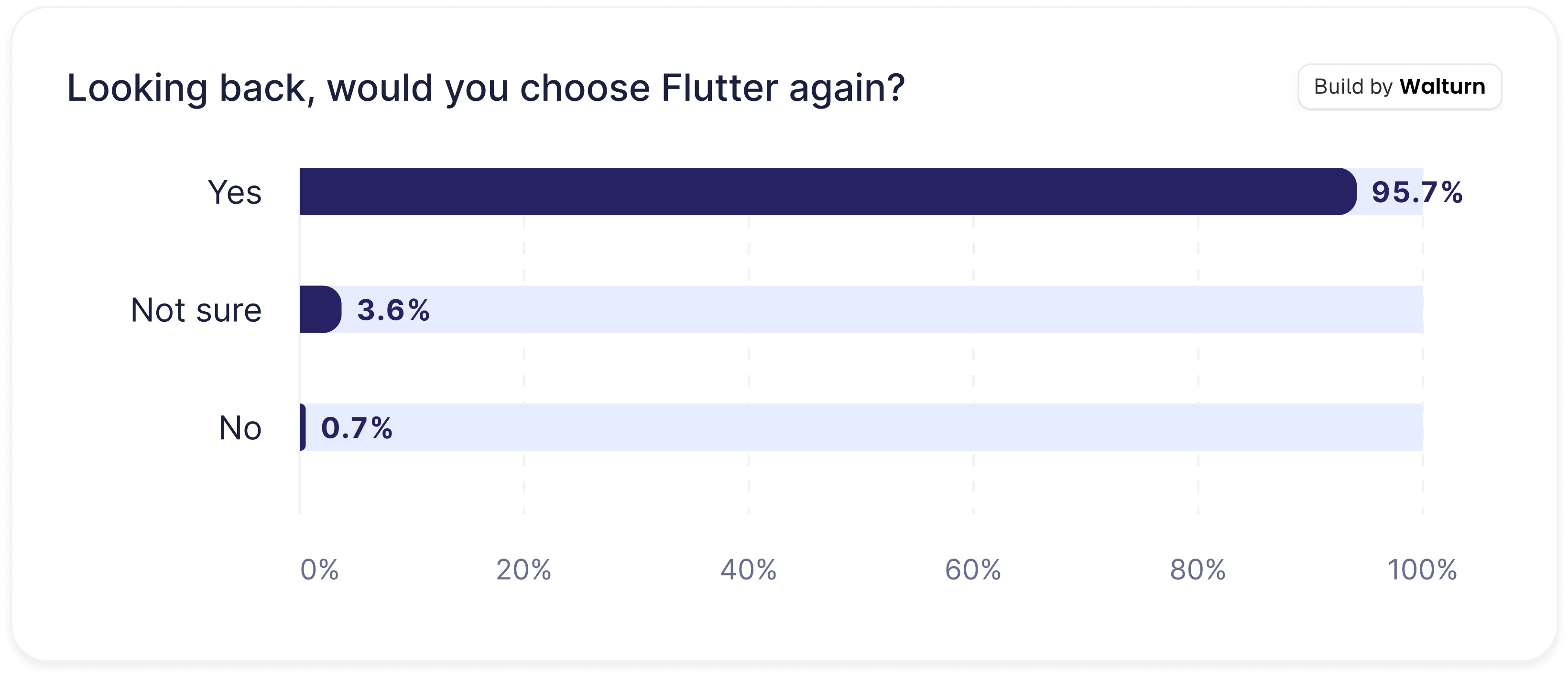
Net Promoter Score: The survey's NPS is 73, indicating strong support but acknowledging areas for improvement. However the high percentage of people who would choose Flutter again (95.7%) and the number of promoters it has (75.8%) shows that it is the best option currently available to them.
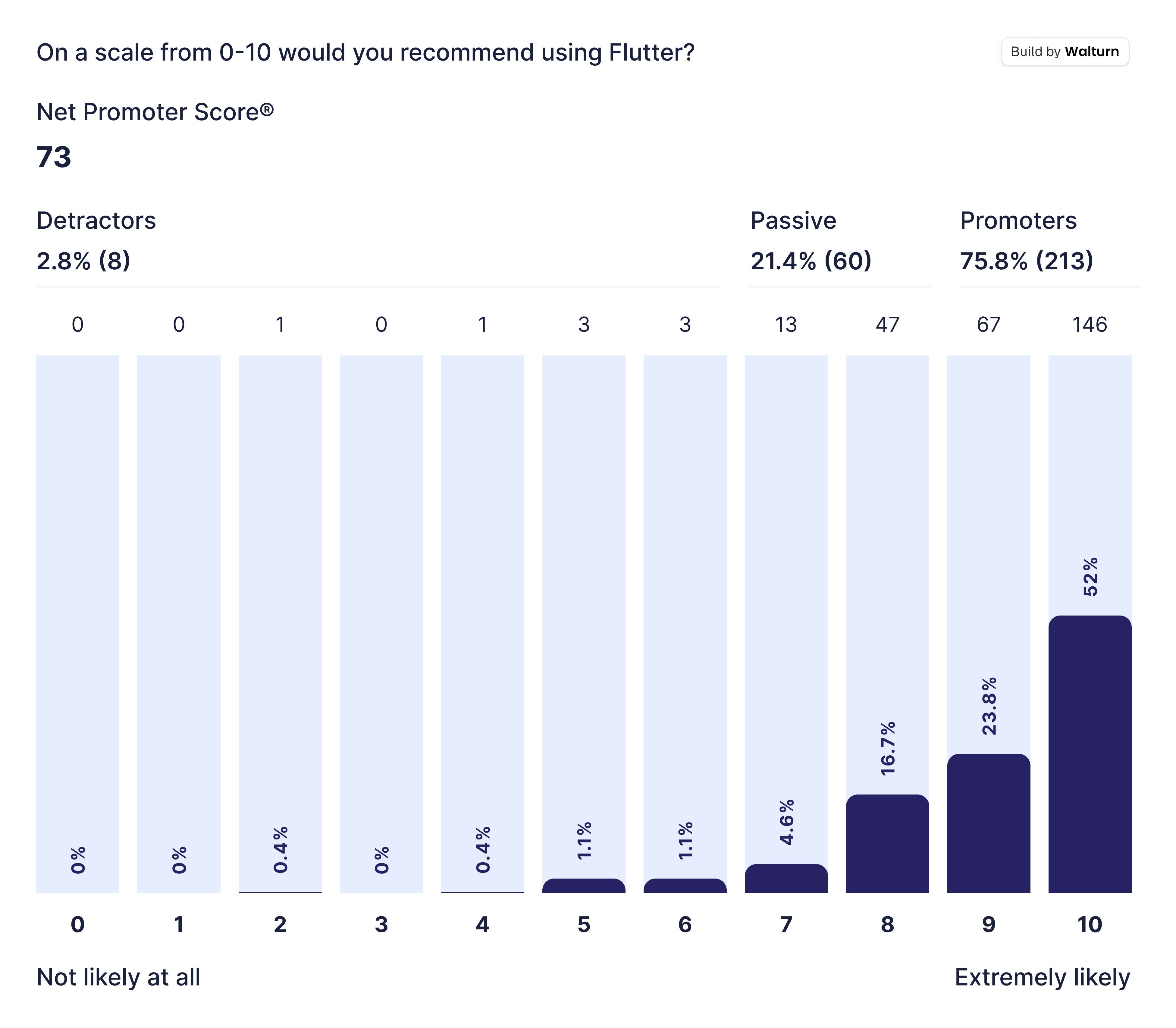
Development Speed: 56.4% of respondents reported that Flutter development is more than 50% faster compared to native technologies. Over 80% cited at least a 20% improvement. These savings are significant and should not be overlooked. By using Flutter, your team can complete a year-long backlog in just 8 to 10 months, allowing ample time for new features.
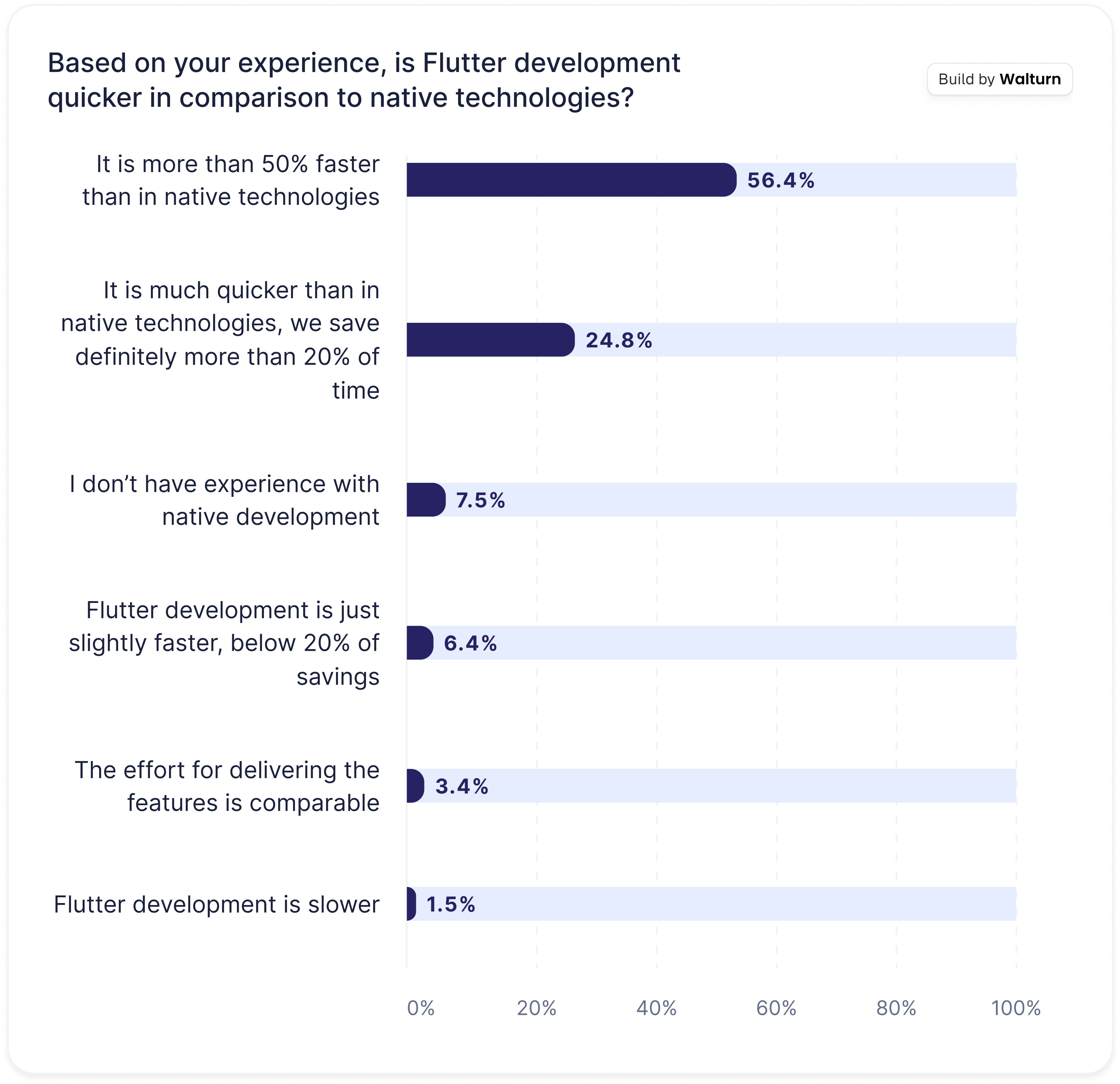
Challenges: Key areas of concern include web user experience (UX) issues (45.4%), background execution (37.8%), user interface (UI) jank (26.5%), and building native integrations (25.7%). Teams using Flutter are primarily concerned with web UX issues, such as scrolling, due to the web's popularity as a target platform for Flutter apps. However, the Flutter team has recently addressed these concerns by announcing that Flutter for Web will be stable for WebAssembly (WASM), significantly enhancing performance for web applications in browsers that support WASM.
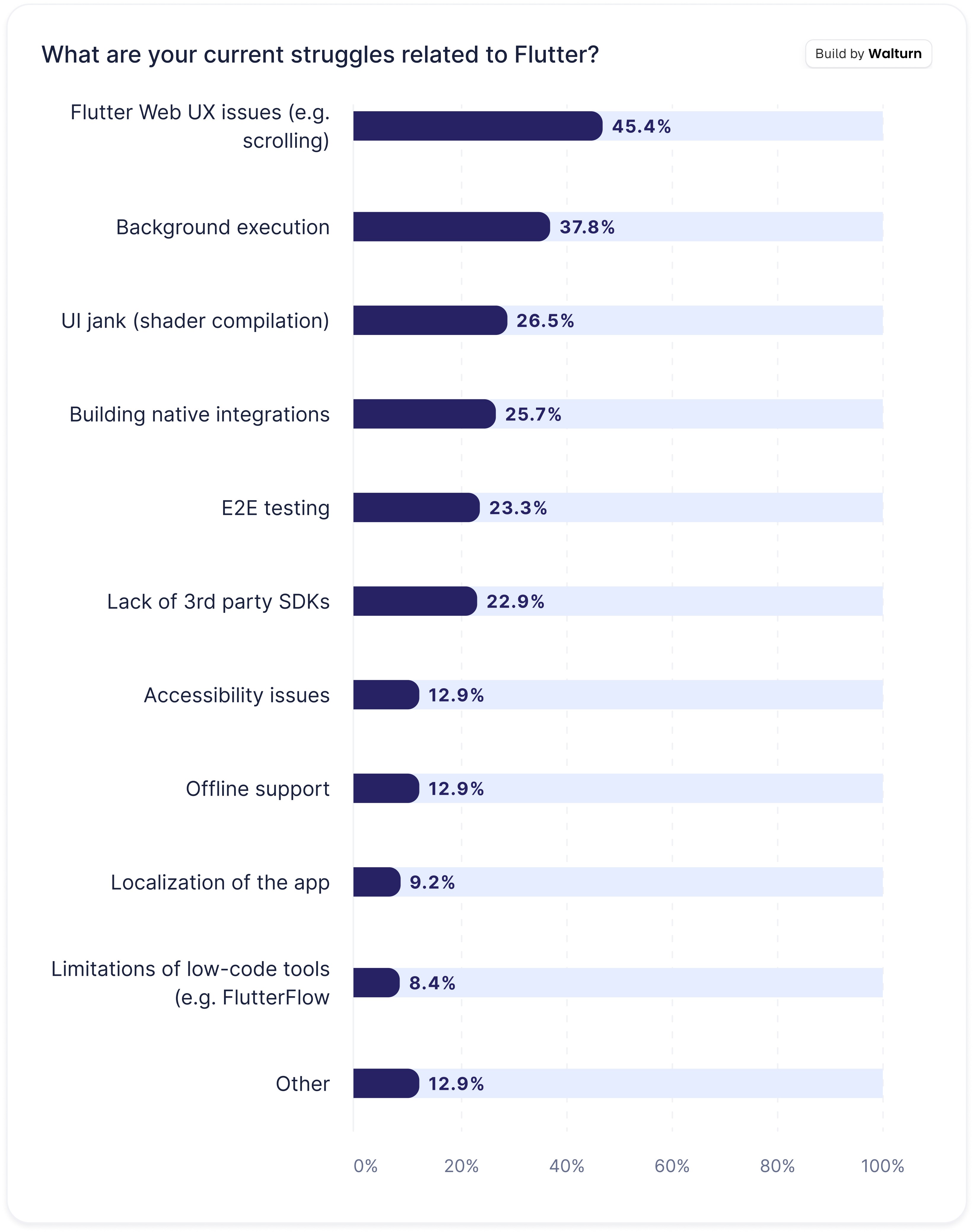
The most significant challenges stem from architectural issues and early decisions, leading to technical debt. Interestingly, 26.8% of teams aim to build a reusable architecture for implementing their solutions across different applications. Additionally, 23.9% of respondents identify integration testing as a persistent problem that needs to be addressed.
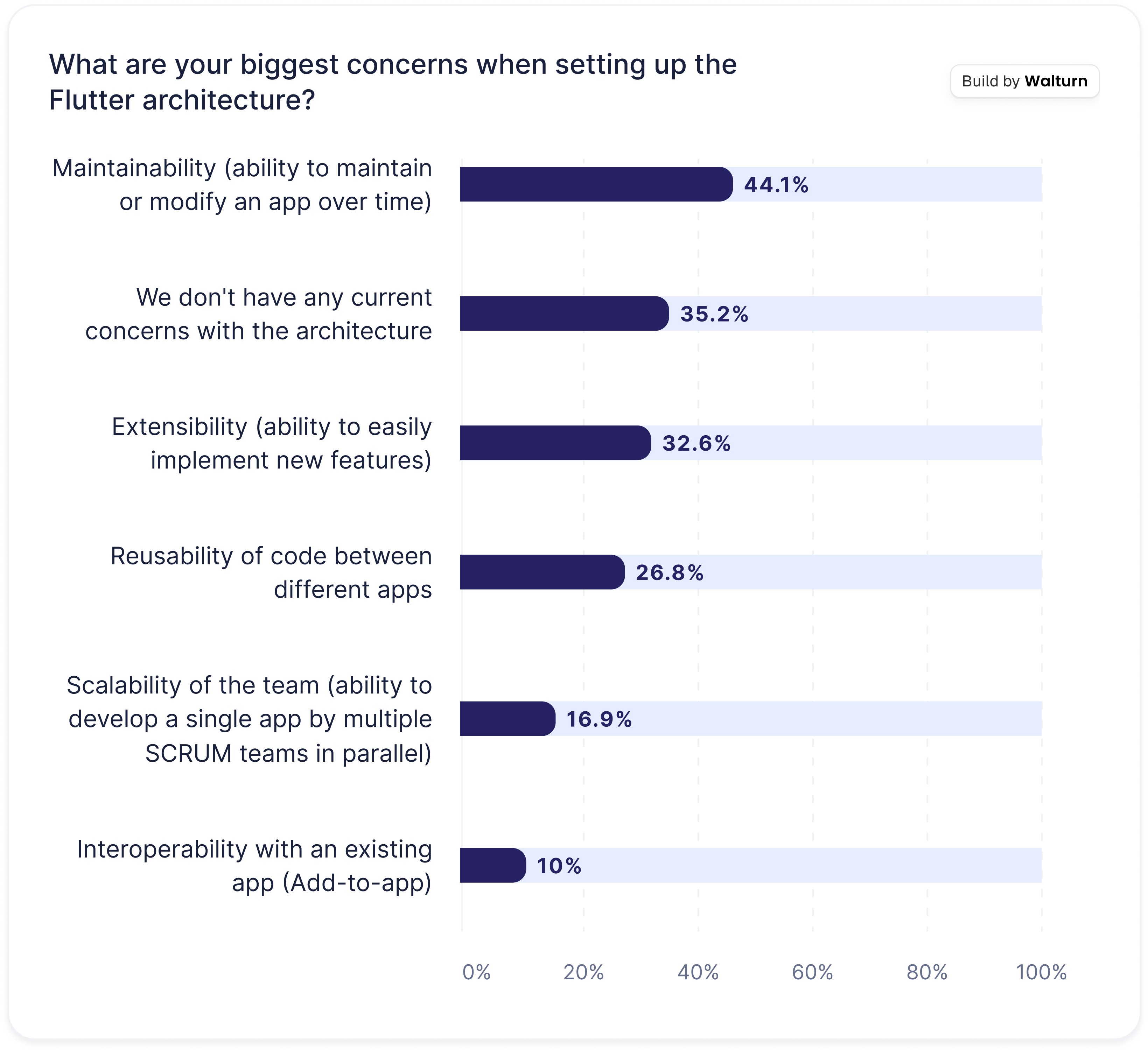
Backend Solutions: Flutter apps leverage diverse backend solutions, with 46% of respondents prominently favoring Backend as a Service (BaaS), notably Firebase, reflecting its integration with Google's ecosystem. Additionally, traditional technologies like Java and .NET see substantial adoption, underscoring Flutter's integration into large-scale application environments.
Cloud Providers and CI/CD Solutions: AWS emerges as the leading cloud provider among Flutter developers with 27.9% of respondents saying it is the most frequently used deployment option. Firebase and Google Cloud Platform (GCP) also enjoy significant adoption with 20% and 15.1% respectively. For CI/CD pipelines, GitHub Actions (58%) leads the way, closely followed by Codemagic (36%), reflecting strong support for efficient development workflows within the Flutter community.
Integrations: Flutter apps excel in integrating essential mobile features, with analytics and push notifications being highly integrated services, each garnering significant adoption rates of 78.9% and 76.9% respectively. Moreover, functionalities like permissions, camera, deep links, notifications, and location services are prominently utilized in over 65% of Flutter applications, emphasizing their importance from both technical and business perspectives.
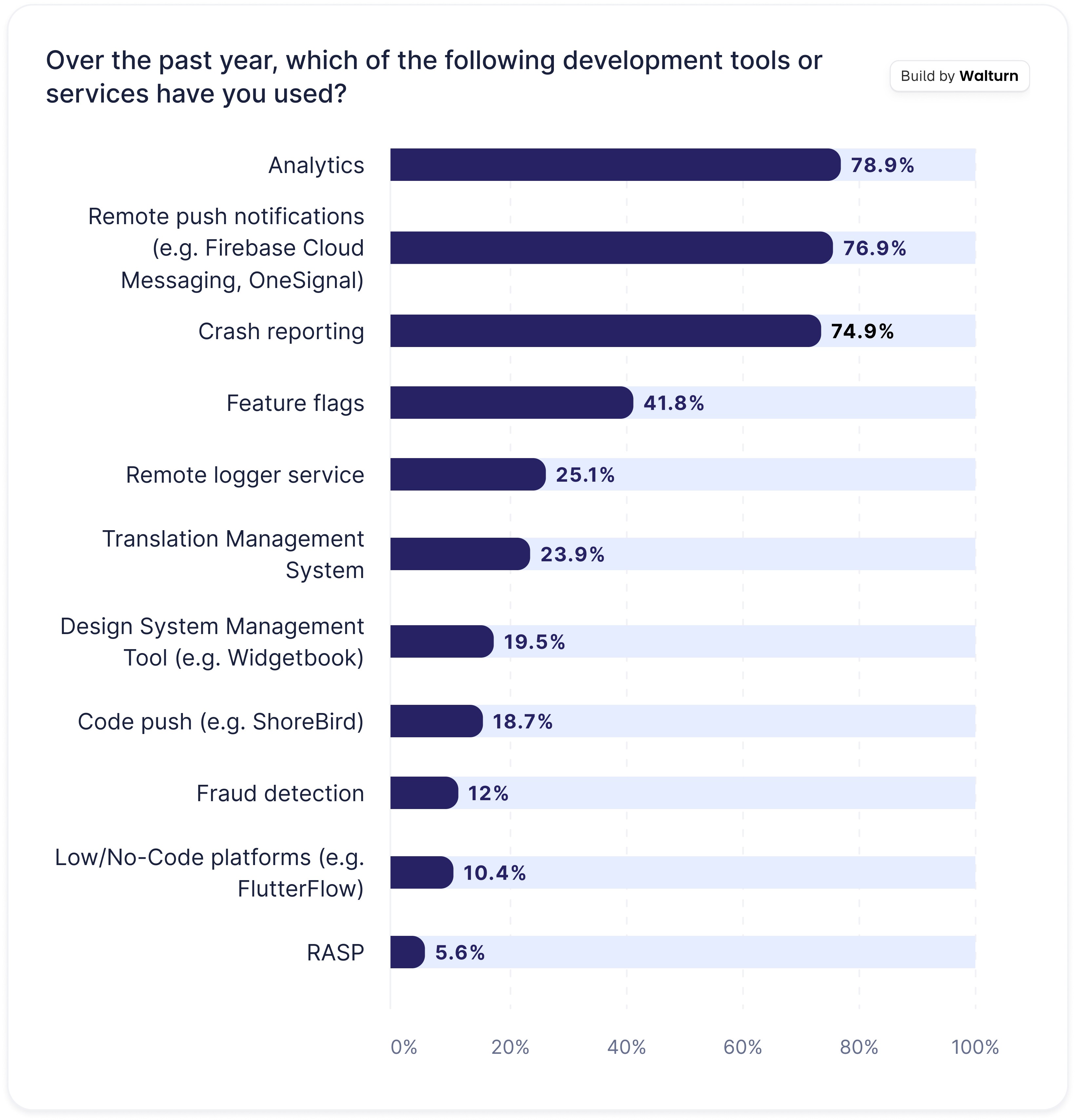
The Future of Flutter
Community Alignment: The survey shows that Flutter’s roadmap is well-aligned with developers' desires. Features like SEO, hot reload in JavaScript, and WASM Garbage Collection (WasmGC) are highly anticipated. Anticipated improvements align well with community expectations, including advancements in AI integration and the development of high-quality web apps. Flutter's early distinction from other cross-platform frameworks was its excellent documentation and strong community support. Respondents underscored this by citing official documentation as their primary knowledge source.
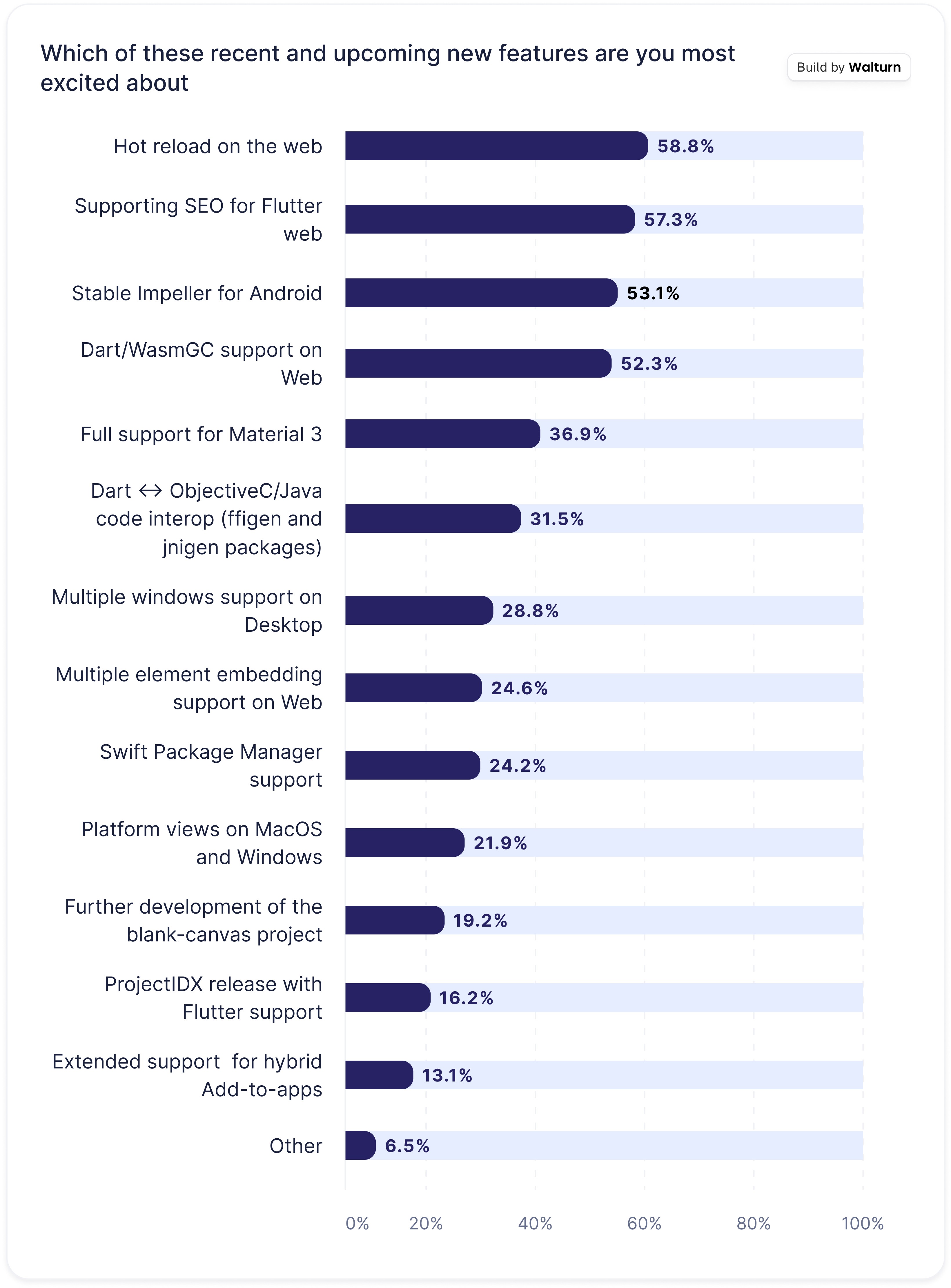
Enterprise Readiness: Flutter has evolved into a mature framework suitable for enterprise and large-scale applications. The survey captured respondents' opinions on various aspects of Flutter over the past three years and their expectations for the next two years. The percentage of CTOs who believe Flutter is suitable for large-scale applications rose from 71.2% to 85%, reflecting increased trust. Additionally, more respondents now view Flutter as a viable alternative to web development frameworks, with this sentiment growing from 15% to 33.8%.
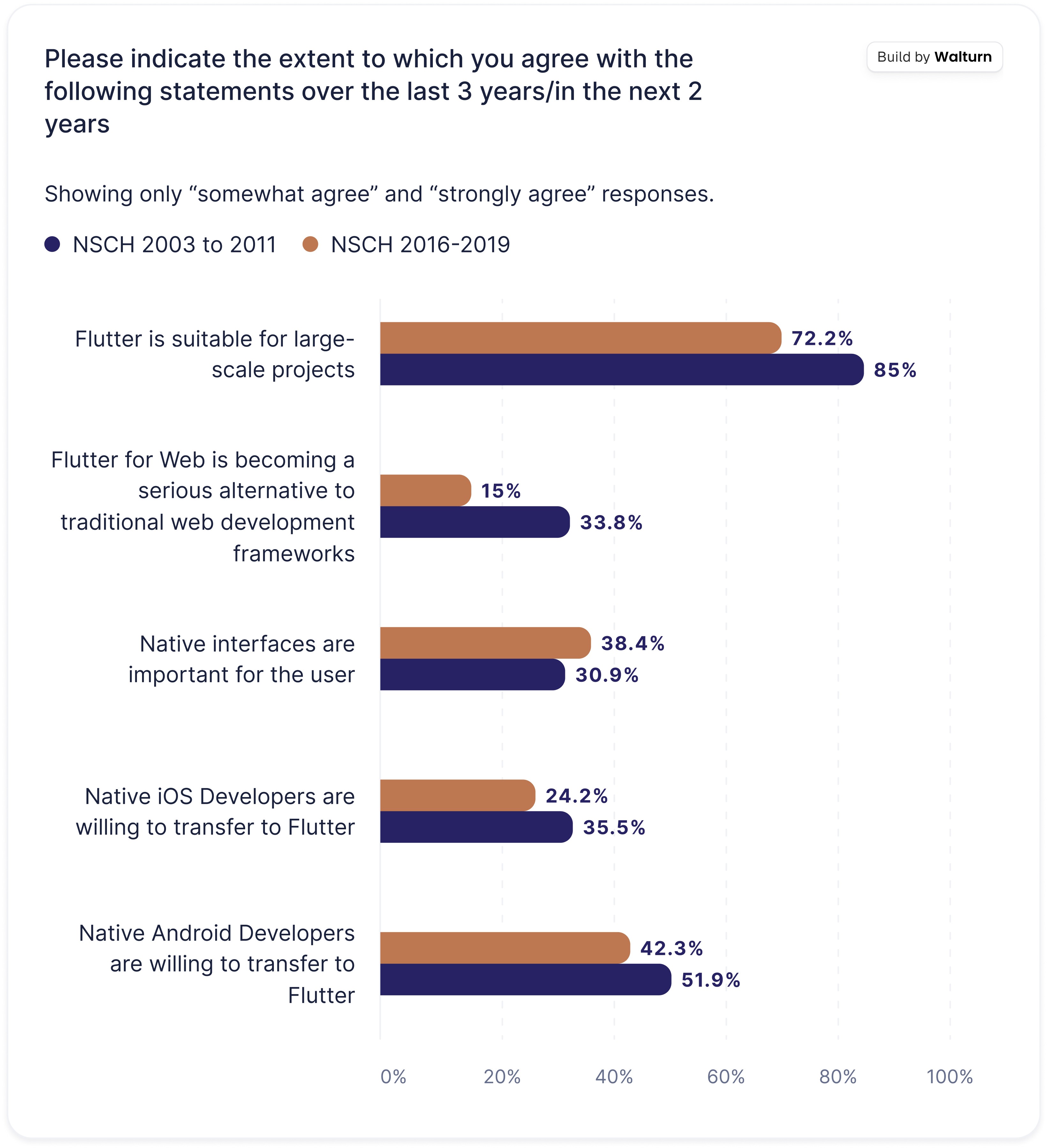
Conclusion
The report highlights Flutter's strengths, such as development speed, high performance, and ease of integrating native SDKs. Despite some challenges, the positive feedback and high NPS of 73 indicate strong support for Flutter among tech executives. LeanCode emphasizes continued innovation and community support to address the existing challenges and enhance Flutter’s capabilities.
For more detailed insights and specific data points, refer to the full report available at LeanCode's website.
Authors
Transform Your Mobile Development with Flutter Expertise
Unlock the full potential of Flutter with Walturn's consulting and development services. Whether you're building a cross-platform app from scratch or migrating your existing solutions, our expert team provides the support and expertise needed to overcome challenges and accelerate development. Leverage our experience to create high-performance, scalable mobile applications that stand out in the market.
References
LeanCode. Flutter CTO Report 2024. leancode.co/report/flutter-cto-report.















































